From City Streets to Village Lanes: Give Oxford's Charge a Chance
An Oxford city (de)congestion charge is good for the whole county….probably
When I was growing up on the edge of the new forest, in a place with poor public transport and an hour-long (at best) bus journey to sixth form, there was only one thing I was ever going to do when I hit 17: learn to drive.
I passed my test a few months after my 17th birthday and for the next year proceeded to drive to college, to work, to gigs, to friends’ houses, and trips much further afield. It was the natural order of things where I came from, and for non-city dwellers it’s almost a way of life. If not quite a primal urge deeply rooted within you, it was at least the *done* thing.
Then, aged 18, I found myself living at University, in South Kensington, London. The Fiat Punto was no more. This fancy thing called ‘reliable public transport’ in the form of the underground and reliable, frequent buses every few minutes got you to where you wanted to go quickly and efficiently, and you thought nothing of it.
One or two people complained about the ‘congestion charge’ brought in by Mayor Ken Livingstone and retained and defended by Boris Johnson. But over time any eccentric individual who demanded to be able to keep driving around Zone 1 in London became a rare species, and the furore died down.
*****
Facing two directions at once
Cut to 2025 and I find myself a family man, living on the edge of my adopted hometown of Abingdon, within touching distance of rural villages but also the edge of Oxford. I’m at the interface of the traditional urban-rural dichotomy, facing both ways at the same time. One foot in both camps.
I’ve also had to weigh up two very human instincts: the part of me that grew up loving the freedom of driving - the ability to go where I wanted, when I wanted - and the part of me that now sees the bigger picture, wanting as many people as possible to be able to move around easily, efficiently, and in a way that keeps our community thriving and liveable for everyone.
I live in north Abingdon and feel extremely fortunate to do so. I cycle to work, to Oxford, to drop the children at school, to the shops, to swimming lessons. Bikes are very useful and practical.
I also take the X1/15 from outside my house to Oxford, and I take the train into Oxford, Didcot, Reading and London. Public transport is good at times, and is the best tool for the job sometimes.
BUT, we also have a family car. Sometimes it’s useful to go to the supermarket, to the local farms, further afield to Didcot and Witney, to visit my family in a tiny village, to go camping, or even just to go to Drayton Household Waste and Recycling Centre!
All of these ways of living can exist at the same time. The world is changing around us, and while all of these ways of living can coexist, we need to make choices
***********
[If you're still reading this now, thank you for giving me ten minutes of your time to put across an argument. I realise many people will be instinctively hostile to what I’m about to say. Other opinions are allowed, but I hope you can see where I’m coming from. I really appreciate your time.]
************
So, what’s the problem, and what’s the history?
Oxford City is the heart of our County. We may not like it, but it’s an economic and cultural powerhouse which has attracted people and organisations for centuries.
Despite the existence of PPE degrees, I like to think the city has brought an awful lot to the party over the centuries, and we’d all be poorer without it.
But it’s also at the heart of our County’s transport network, and the City’s success or failure matters and impacts on the rest of us even if we think it’s got nothing to do with us.
It has also - famously - suffered from traffic congestion.
In the mid 20th century a bypass concreting over Christchurch Meadow was proposed. It didn’t happen, but it gave a hint as to the radical thinking all the way back then.
In 1973 the UK’s first permanent park and ride opened at Redbridge, and several more have followed since. They are extremely well used, but they need to work better, they need to become quicker, more frequent, and more reliable for more people.
Because there is a fundamental problem which remains: we have an expanding population, more houses, more cars, more jobs, and something’s gotta give. You can’t just do nothing.
All improvements have to start somewhere, and they have to start within the constraints we’ve got — and in Oxford, that means working with an ancient, medieval street layout that simply wasn’t designed for thousands of cars a day.
We’re not going to be building flyovers over St Giles, or bulldozing Christchurch Cathedral to squeeze in a dual carriageway.
The shape of the city is what it is — beautiful, compact….and completely unsuited to modern traffic volumes. That’s not something we can tarmac our way out of. It means being smarter with how we use space, like many similar cities do across europe.
We have long become used to things like ‘bus gates’ - including on the high street - several decades ago. Authorities intervening in our road network like this isn’t new, dystopian, or anything the new band of conspiracy theorists would have you believe.
But for us in the towns and villages, why do we care?
The reason all this matters for those of us outside Oxford is because so many of our services are interlinked. The X1/X15 from abingdon, X2 to didcot.
Heck, what happens inside Oxford also affects driving on the A34, with knock on effects for what goes on outside my front door. We don’t live in a vacuum.
What we all want is a reliable and joined up transport network with numerous and affordable routes which take us where we want to go.
But this can’t happen if the bus in 2025 gets stuck on the Abingdon Road with the rest of the cars.
Why has nothing happened before now?
The simple answer to this question is politics. You’ll have seen from the past few weeks how much emotion and backlash proposing a solution can result in. And politicians are often weak, spineless, and constantly with one short-term eye on getting re-elected again at the expense of everything else.
Oxfordshire has been run by Conservatives at the Council and Westminster level for decades. There numerous times over the past 20 years where they’ve flagged Oxford’s congestion as the single most critical issue limiting the prosperity of our county.
Councillor Ian Hudspeth (Former Leader of Oxfordshire County Council):
"Oxford has a particular problem managing traffic due to its compact size, historic buildings and growing economy. Doing nothing is not an option. Some of the ideas we will be putting forward may not be popular with everyone, but unless we find a way to change gear, the city faces more and more congestion in the years to come."
(Source: Oxfordshire County Council News, September 2017)
"As a driver, I am well aware that I am part of the traffic problem every time I get in my car. We have to act now if we are to ensure the city and whole of the county continue to prosper with better transport choices in place in the future."
(Source: Oxfordshire County Council News, September 2017)
Nicola Blackwood (Former MP for Oxford West & Abingdon):
"If we are able to achieve anything like our economic potential, we need to overcome the infrastructure barriers that not only inhibit start-ups but also growth of existing local businesses."
(Speaking about the impact of traffic congestion on the Oxfordshire economy, Oxford Mail, October 2013)
"Do you leave an hour earlier than you need to meet a client and lose productivity or do you leave on time and risk being late for the client and losing their business? Few businesses have the kind of margins to sustain that kind of uncertainty."
(Highlighting the daily challenges businesses face due to congestion, Oxford Mail, October 2013)
But every time when push came to shove: they all ducked a solution. And congestion has continued to get worse.
They wanted a quiet life and didn’t want to challenge people. But life is short, and the window to make a positive impact is limited.
Is now really the moment?
Congestion matters — and it matters now. If we do nothing, public transport services will decline, and opportunities will be lost. All of our public transport operators say the same thing.
Oxfordshire’s population is growing fast: it was around 596,000 in 2000, and it’s already over 750,000. By 2030, it’s expected to pass 800,000. That growth brings challenges — and we can’t afford to ignore them.
If we don’t act on the levels of traffic which cause gridlock, bus companies and other essential services will struggle to stay viable. But it’s not just about transport — it’s about all the things that depend on it: jobs not taken, businesses not started, ideas not shared, friends not seen, even relationships that never begin. Congestion quietly chokes off possibility. Tackling it now means keeping Oxfordshire moving — and open to opportunity.
So what is actually being proposed?
The County Council is proposing a temporary congestion charge for Oxford, aimed at cutting traffic and keeping buses moving while Botley Road remains closed for Network Rail works.
It’s a stopgap measure until the longer-term traffic filters can be brought in — and will use the same cameras and infrastructure already paid for.
Under the plan, car drivers would be charged £5 per day to drive through any of six camera points forming a ring around the very centre of Oxford — including Hythe Bridge Street (by the station), Thames Street (near Westgate), St Clement’s, St Cross Road, and two locations on Marston Ferry Road and Hollow Way (which would only operate during weekday rush hours). The charge would apply 7am to 7pm, Monday to Sunday (except for the rush-hour-only points), including bank holidays.
You’d pay online or by phone — and it’s a flat fee, no matter how many times you pass through the cameras in a day. Other vehicles like vans, lorries, buses and coaches wouldn’t be affected at all — this only applies to private cars.
Crucially, this is not the same as the previously proposed traffic filters. Those would have capped access at 100 days per year per vehicle before fines kicked in. This temporary charge doesn’t limit how often you drive — you can go through the cameras every day if you like — but you’ll pay £5 each time you do.
There’s a long list of permits and exemptions, including for:
Blue Badge holders
Carers and health and social care workers
Mobile traders and business vehicles used for work
Residents and commuters in the central area who currently have no alternative route due to the Botley Road closure
Every Oxford resident would also get 100 free day passes per year, and people in the rest of Oxfordshire would get 25 — just like under the traffic filter plans. These let us drive through all six charge points without paying, a liberty which is not extended to those resident outside the county.
The consultation is open now, with plans to implement the charge in autumn 2025. It would last for no more than two years, ending once the traffic filters can be introduced after Botley Road reopens in summer 2026 — although if this system works better, the Council could propose to keep or adapt it.
You can provide your feedback until 3rd August here: https://letstalk.oxfordshire.gov.uk/congestion-charge
That’s the stick, where's the carrot?
What do people get in return? It’s a good question. If all goes as planned, the charge changes behaviors to result in a reduction in the numbers driving through the city. But some people will choose to pay, and that’s fine. So it will provide revenue.
Any money raised from the congestion charge has to, by law, be reinvested in transport improvements (rather than go to Councillors) — and there’s a long list of things already planned or underway.
We’re talking cheaper bus fares, more frequent services, expanded Park & Ride options, entirely new routes connecting up towns and villages hitherto not connected well at all; better cycling and walking routes, and a joined-up active travel network that actually makes it easier to leave the car at home.
(This is also the only way we might one day see something like a tram network, or a ‘very light railway’……I don’t think we can afford to limit our ambition here)
The Council is also bidding for extra funding from government and bus companies to support this shift — but crucially, many of those improvements only stack up if we reduce traffic first. It’s about making sure public transport and cycling are faster, more reliable, and safer than sitting in yet another queue. It’s a bit of chicken and egg scenario.
But if I still want to drive into Oxford?
Honestly, absolutely fine! You may be in one of the many exempt categories. You may have plenty of the day ‘passes’ from your allocation left. If not, you should still be able to reach your destination without passing through one of the central cameras, just via different route.
And if you are going to pass through a camera and the cost is not prohibitive (and it isn’t compared with Westgate parking charges)…..well at least in theory the roads will be clearer for you…..because on a population-level these types of schemes have been proven to work!
How about the carrot before the stick?
People often say: “Why not sort out the alternatives first—fix the buses, build the cycle paths, make it easier to leave the car at home—and then think about charging people?” And honestly, I get that instinct.
But here’s the problem: we don’t control the buses. Under our deregulated system, private companies run the routes—and right now, they’re struggling. Passenger numbers are down, costs are up, and many services are being cut because they’re running at a loss.
Why? Because the buses get stuck in the same traffic as everyone else. Journeys take longer, reliability drops, and people stop using them—which starts the cycle again. No government—local or national—is going to pour in the hundreds of millions needed to transform the system up front, on a vague promise that people might travel differently one day.
If we want better buses (and a future tram network), we have to give them a fighting chance. That means reducing the congestion that slows them down and eats into their margins. Without that, even the best services won’t survive. The ‘carrot’ doesn’t work unless we clear the road for it first. And here’s where the rubber hits the road.
Has anywhere else tried this recently?
Many historic cities with limited road space have turned to congestion charging as an effective way to cut traffic. The approach has been in place for over 20 years in UK cities like London (£15/day) and Durham (£5/day), and is also used across Europe in places such as Stockholm and Milan. Other UK cities have clean-air zones which operate on a similar principle.
Even in car-addicted America they’re giving it a go, and the outcomes have been spectacular (even if the president it trying to undo it)
Since New York introduced congestion pricing in January 2025, car traffic in the central zone has dropped, travel speeds and bus reliability have improved, and public transit use has surged. Teachers have reported kids getting to school much earlier! Even Broadway attendances have increased!
Crucially, traffic hasn't worsened in surrounding areas, and crash injuries, noise complaints, and parking violations are down. Businesses and tourism remain steady, school buses are more punctual, and fire response times have improved. Though it’s early to assess long-term impacts on pollution or equity, the scheme is clearly reducing congestion and generating major funds for transit upgrades—making a strong case for Oxford’s charge to deliver similar benefits
For future generations
We also have to talk about intergenerational fairness. For too long, we’ve built our transport system around the needs and habits of the present — or more accurately, the recent past.
But it’s the next generation who’ll be left with the consequences: more polluted air, more expensive public transport, more isolated rural communities, and a city that simply doesn’t function, with investment being sent to other parts of the country.
Young people today are less likely to drive, more likely to use buses, bikes, or walk — but we’ve made those options harder, slower, and less safe. If we want to leave them a city and county that actually works, we have to stop kicking the can down the road
He’s written all this and hasn’t even mentioned the environment or health yet?
That’s deliberate. Everything I’ve said so far stands on its own purely in terms of congestion — how it slows us down, costs us time and money, and holds the city and county back.
Even if cars weren’t contributing to air pollution — with harmful NO₂ and PM2.5 particles affecting the lungs of everyone nearby.
Even if walking, cycling and other active modes of transport didn’t help build healthier habits and reduce pressure on the NHS.
Because even if none of those things were true, congestion alone would still be reason enough to cut traffic.
Health and the environment are deeply important to me. I hope they matter to you too (and that’s a whole other essay). But even if they’re not your primary concern, the good news is that reducing traffic brings those benefits along for free — and it’s your children’s lungs, your local air, and the future NHS budget that will thank you.
Be more Sadiq Khan
Labour colleagues should look to their Mayor of London. He proposed the dramatic ULEZ expansion, narrowly saw his party lose a parliamentary by-election, got disowned by his party leader, and…….carried on implementing it anyway.
One year on, London’s expanded ULEZ has cut toxic nitrogen dioxide by 27%, reduced PM2.5 exhaust emissions in outer London by 31%, removed nearly 100,000 polluting vehicles from daily use, and improved air quality at 99% of monitoring sites - all without harming high street footfall or retail spending.
Oh, and he won re-election amidst all that. Because he owned the problem, he had principles when it came to the solution, and he held his nerve - despite social media decrying him as the antichrist.
Because doing nothing isn’t an option, and all improvements have to start somewhere.
Are you a man or a mouse?
There comes a time when you have to weigh everything up. And everything I’ve heard on this topic has shown the very worst impulses of our worst characters, and so I felt I had to write this.
Our local media will exemplify all the worst qualities. Amplifying the shoutiest voices of all, generating scare story after scare story for the clicks, exciting and extracting the worst prejudices of humankind in an attempt to sustain a collapsing business model. Functional transport network: be damned.
Some people will share knee-jerk petitions against the congestion charge. What they’re really railing against is doing anything about congestion, against a functional transport system (and that includes for cars!), against thousands of people getting to work and to school on time, and against Oxfordshire being taken seriously as place to invest in throughout the next several decades.
They’re petitioning for the status quo, which as we know is intolerable.
For some MPs and local councillors it’ll be easy. The first loud voices on Facebook and Twitter they read say they want to drive everywhere without restriction: so they’ll follow that.
Forget the decades of evidence, or the urgency to act and come up with a functioning transport system for their children and grandchildren: “Someone on facebook said NO, so that’s the position I’ll take”. Let’s ignore the voices of the people who don’t speak up, or those not able to.
A much, much larger number of people will not be sure. Or not know the facts. Or are willing to be persuaded (despite the efforts of our local clickbait media).
Change is hard, life sucks, and we can’t trust our (local) governments with this. I get that. But I think we should give this a hearing.
The easy path for a quiet life is to just say ‘NO’. It would be going onto facebook saying we need to ‘fight’ this proposal for the easy ‘likes’.
But you only get one life, and I’d rather do the right thing, risk it all, instead of nodding along with bad-faith actors who have no interest in enacting positive change, or in pulling our great county towards the 22nd century.
Change is hard, but we should at least give this a chance. For the sake of our villages, towns, city and county, and all the people who reside within it.




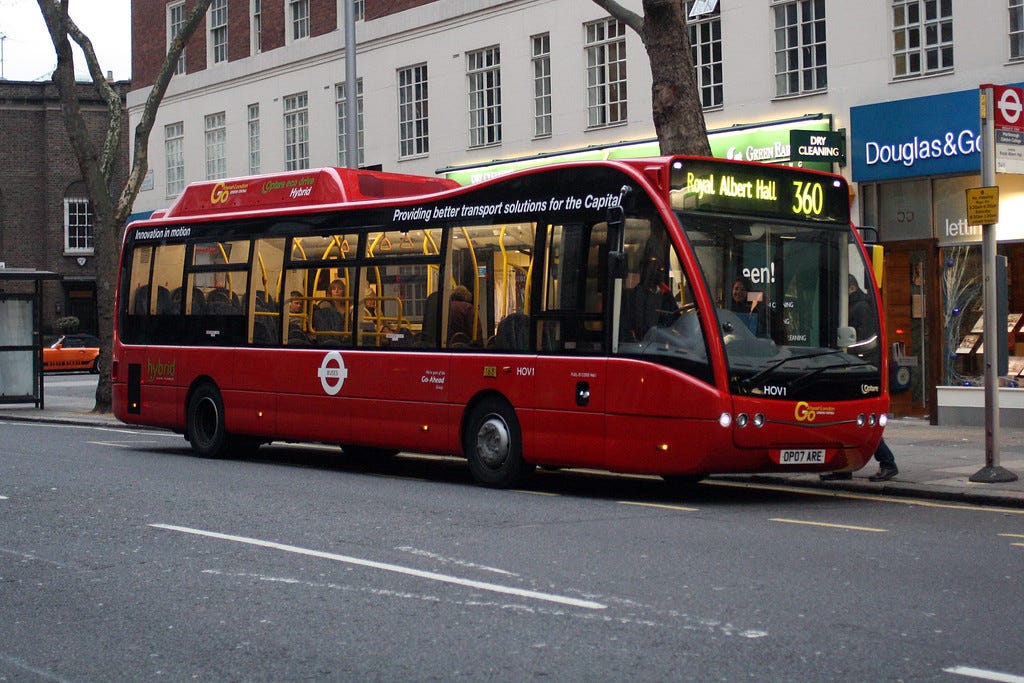

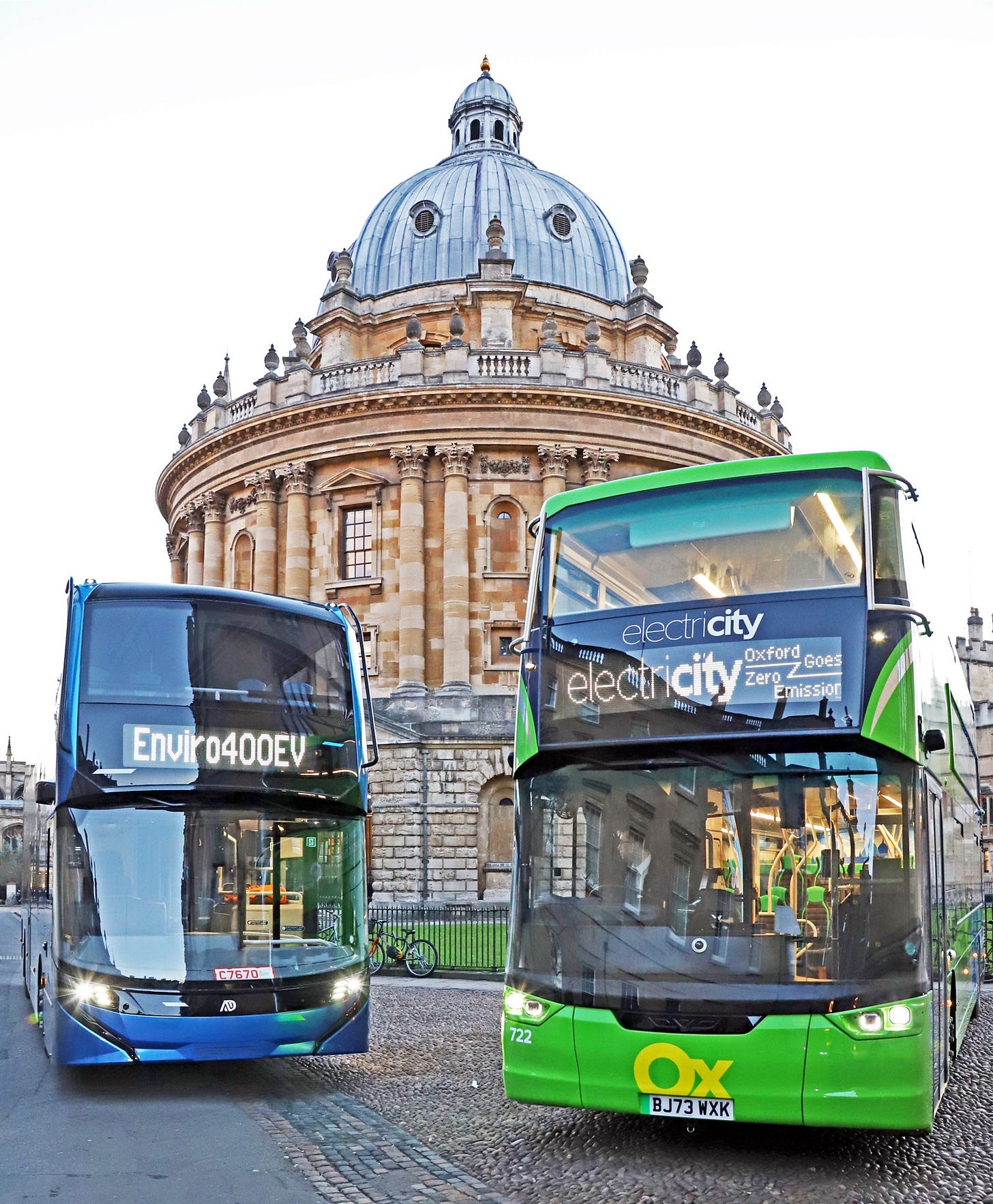
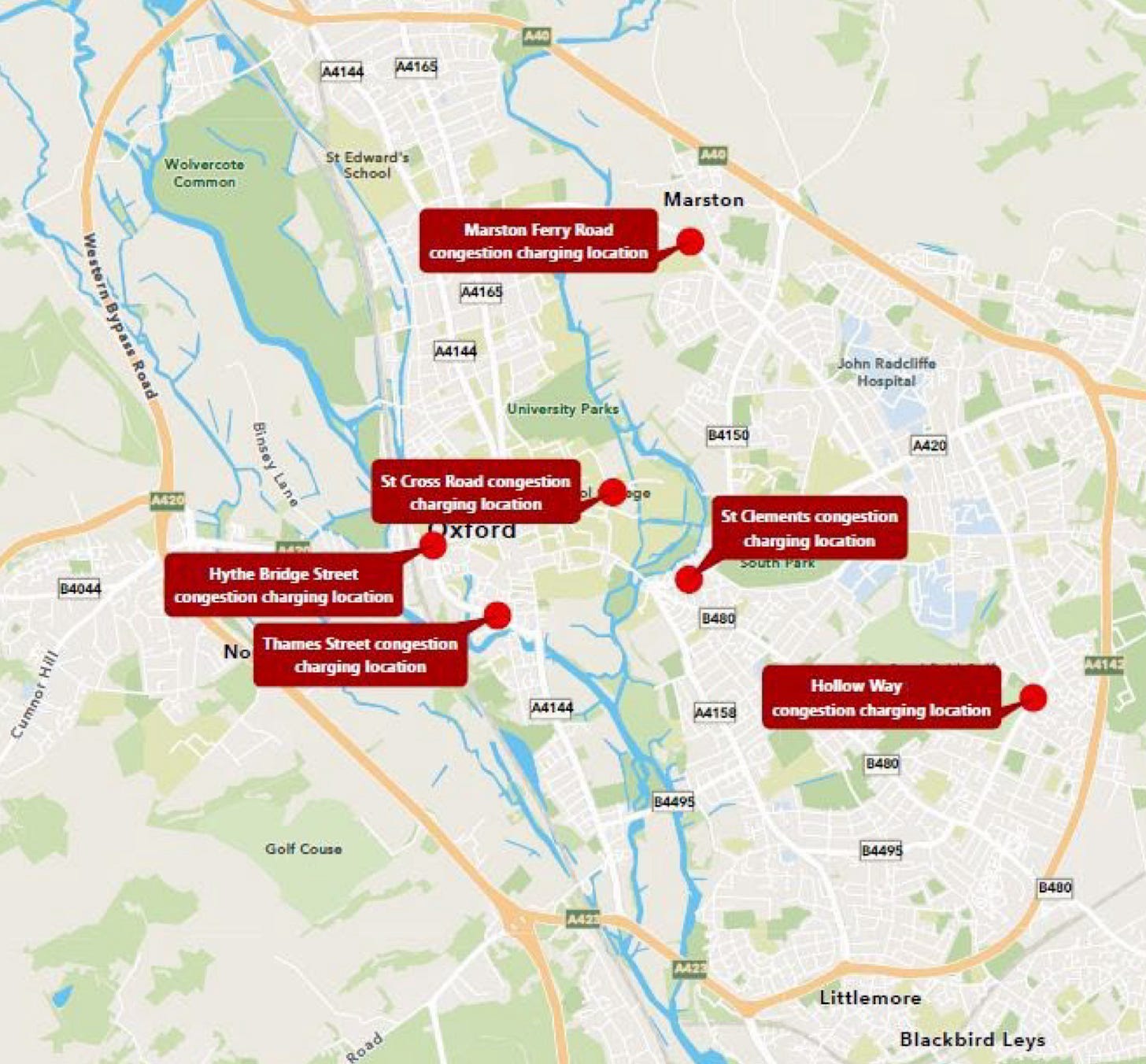
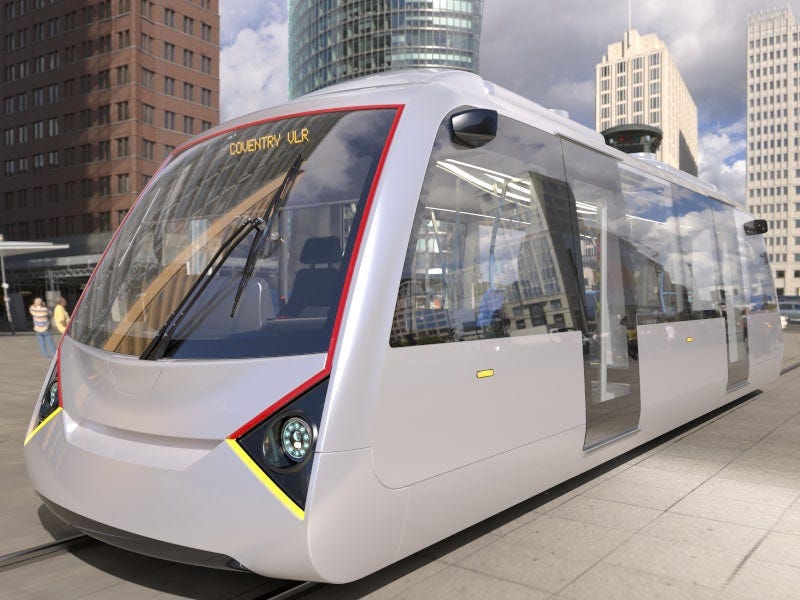
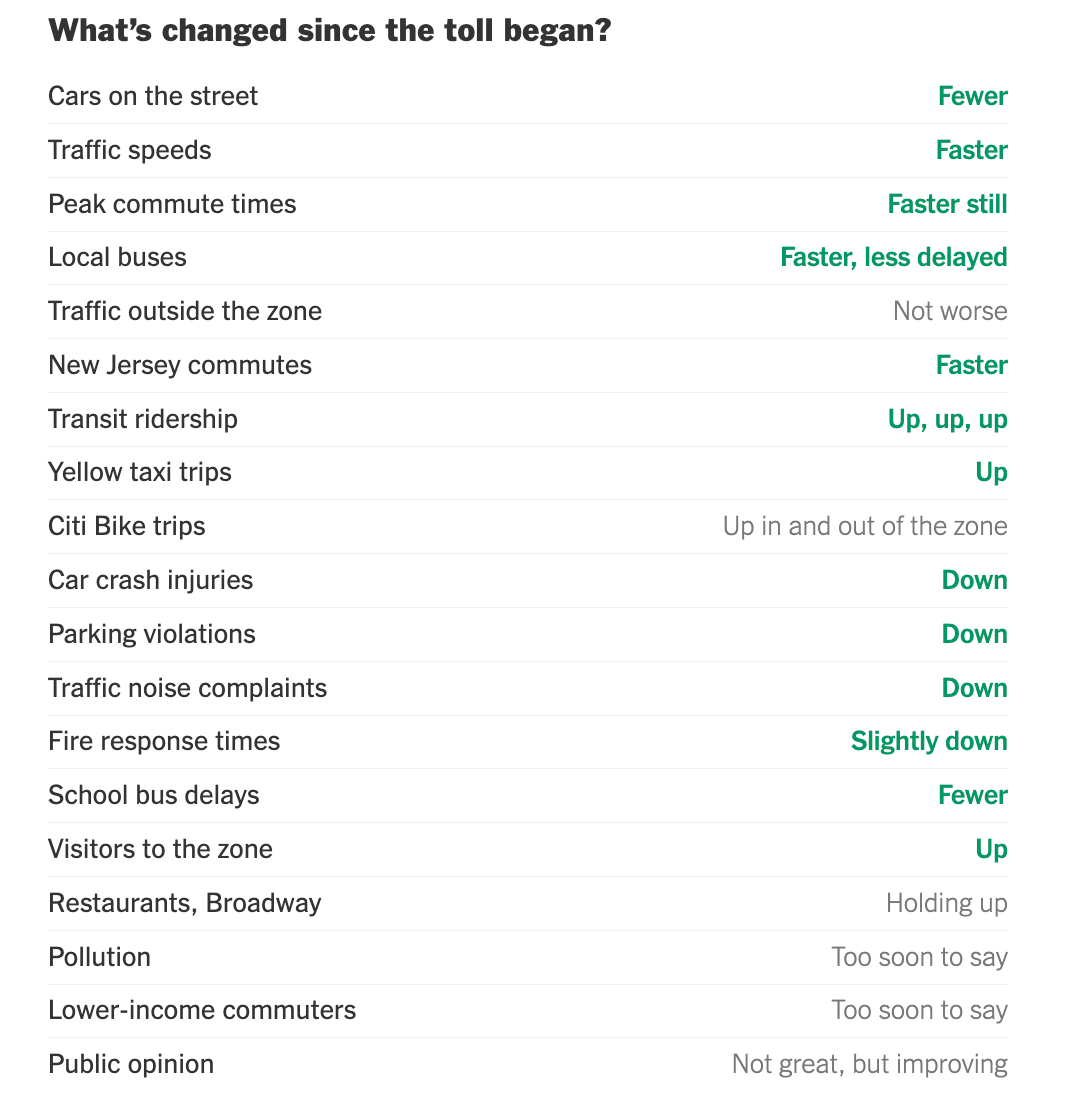
Excellent piece! And did you say a future tram network?! Yes, please!! Oxford resident drivers can continue to congest, endanger and pollute on the most direct routes for 100 days a year. And for the rest of the year, £5 a day is still cheaper than 2 singles on a bus. Oxford bus users, who have already been paying the price for the congestion that others create, should get 100 day passes for the bus too! Funded by those who pay the charge (thank you very much!). Maybe allow drivers to swap their day permits for bus passes too!
Great piece. See if you can get wider circulation on it . Speak to the BBC Oxford /
Siobhann (Oxfordshire Liveable Streets - connected on LinkedIn)